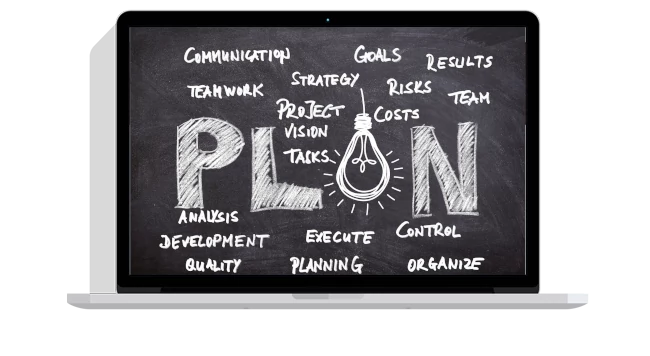
Three Levels of Benefits in Electronic Document Interchange
In the previous article, I explained what is EDI and briefly mentioned the fundamental advantages of replacing traditional documents with direct IT systems integration. This time, I present the benefits from using EDI and the conditions for their implementation, categorized into three levels of business maturity.
On what level of EDI maturity is your company?
Level 1 - Elimination of Manual Data Processing
One of the most apparent benefits of EDI implementation is elimination of manual data entry and of inevitable errors, usually requiring a significant amount of time (and money) to be clarified. The transition from paper to electronic documents also results in some time and materials cost savings related to printing, scanning, and document archiving and retrieval.
Companies that only use EDI to meet their partners requirements often stop at this level.
Level 2 - Business Processes Automation
More important cost reductions can be achieved by optimizing and re-thinking business processes and incorporating automation, based on the data received from the partners. Achieving this second level of benefits usually require some modifications to the existing IT system, as the necessary functionalities might not present. Staff trainings and change management are also required.
Examples:
- Synchronization of suppliers’ product catalogs to streamline the creation and maintenance of commercial offers.
- Integration of purchase orders with automatic inventory allocation and production/supply planning.
- Confirmation of purchase orders and early-stage price difference checks.
- Fully automated approval of goods invoices using pre-established data from earlier stages.
Such activities bring important savings, such as:
- Accelerated product launches for faster time-to-market.
- Reduction in administrative costs.
- Lower inventory levels with maintained product availability.
- Mitigation of stock shortages, thus eliminating lost sales.
- Reduction of losses attributed to errors in goods’ receipt.
- Maximized utilization of early payment discounts, typically ranging from 0.5% to 3% of the invoice amount.
The enhancements and advantages outlined above can be encapsulated under the term “business industrialization”, in contrast to “exception management”, where occasional unique situations demand employees to devise creative solutions to address issues.
The implementation of EDI essentially compels organizations to proactively anticipate various business scenarios and structure their operations to enable IT systems to automatically manage the majority of business events through predefined algorithms.
Level 3 - Building a Competitive Advantage
On the next level, thanks to seamless integration with partner’s IT system, businesses have the opportunity to establish a distinct competitive edge and generate fresh sources of revenue.
Examples:
- A retail chain is more inclined to form partnerships with suppliers experienced in EDI, indicating efficient organization and reduced administrative costs.
- The swiftness of information exchange and data completeness allows for the implementation of new processes, such as just-in-time deliveries, product assortment extension, or direct-to-consumer shipments.
Building Trust
Finally, it is worth mentioning that EDI makes cooperation between partners more fluid thanks to the elimination of trouble spots. Without electronic data exchange, errors in data processing on both sides inevitably lead to contentious situations resulting from delayed, incomplete or incorrect deliveries or payment delays. The introduction of EDI facilitates building trust and brings mutual benefits to both parties.
Estimation of Financial Profits
Most sources estimate the financial benefits from the introduction of EDI at around 15€ for each exchanged document1 and up to 65€ per transaction in a full trade process. The degree of automation from the introduction of EDI can vary significantly, but based on this number, total savings for trading companies are estimated at 1-2% of turnover. For a medium-sized retail chain generating a turnover of EUR 250 million, this means EUR 2.5 - 5 million in savings per year.
Wojtek Kazimierczak
First published: 2023-08-07
Related articles:
➀ Demonstrated Benefits of a Paperless Supply Chain: Saving time and money with GS1 Order to Cash Standards. ↩︎




